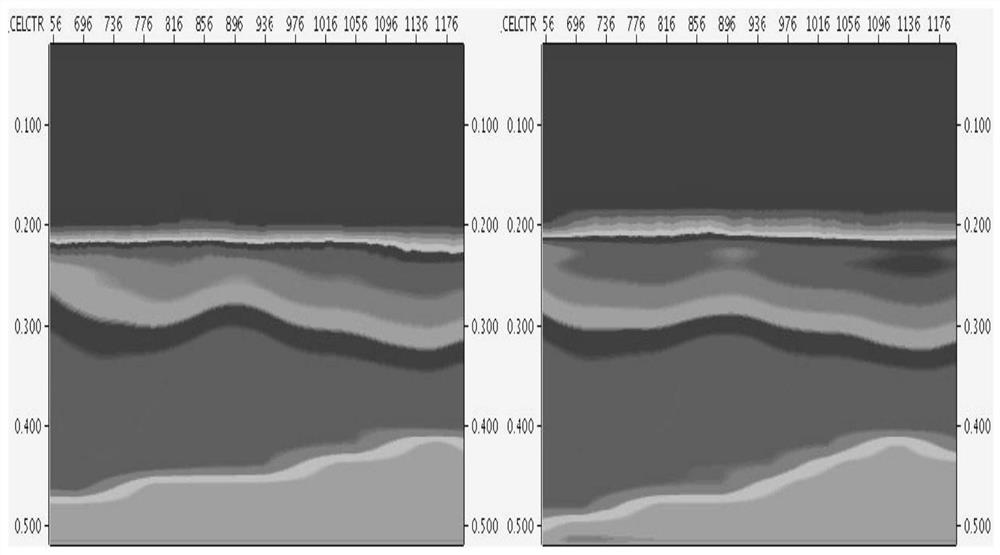Fusion processing method and system for repeatedly acquired seismic data
A technology of fusion processing and seismic data, applied in the field of oil and gas geophysical exploration, can solve problems such as lack of clear geophysical meaning, achieve the effect of improving seismic imaging effect, reducing structural artifacts in stitching areas, and improving consistency
- Summary
- Abstract
- Description
- Claims
- Application Information
AI Technical Summary
Problems solved by technology
Method used
Image
Examples
Embodiment 1
[0035] The purpose of the patent of the present invention is to solve the problem of time difference or weak structural difference between seismic data collected repeatedly at present, and calculate the space-varying time difference between at least two acquisitions due to the change of near-surface conditions based on the near-surface velocity model. And the consistency of the surface is decomposed into the static correction of the shot point and the receiver point.
[0036] Taking the fusion processing that has been repeatedly collected once in a work area as an example, the processing flow realized by the present invention is as follows figure 1 As shown, the method principle and implementation steps are as follows:
[0037] S1. Obtain two collections of data at the same location, and use different physical points to invert the velocity model and calculate the static correction accordingly; distinguish the two collections of data at the same location by different gun statio...
Embodiment 2
[0046] Such as Figure 5 As shown, this embodiment provides a time difference correction system for repeated acquisition of seismic data, including:
[0047] Static correction amount calculation unit: used to obtain two collection data at the same location, and use different physical points to invert the velocity model and calculate the static correction amount accordingly; distinguish the two collection data at the same location by different gun station numbers, so that It has different physical points.
[0048] Unified data arrangement for the two collected data. When the excitation and reception of the two collection records are at the same coordinate position, the position of the shot point and the receiver point are the same during the two collection processes. In order to distinguish the two collection records, we add a digit before the recorded shot detection station number The number of collection times, for example, for the first collection of data, the original 300...
PUM
 Login to View More
Login to View More Abstract
Description
Claims
Application Information
 Login to View More
Login to View More - R&D
- Intellectual Property
- Life Sciences
- Materials
- Tech Scout
- Unparalleled Data Quality
- Higher Quality Content
- 60% Fewer Hallucinations
Browse by: Latest US Patents, China's latest patents, Technical Efficacy Thesaurus, Application Domain, Technology Topic, Popular Technical Reports.
© 2025 PatSnap. All rights reserved.Legal|Privacy policy|Modern Slavery Act Transparency Statement|Sitemap|About US| Contact US: help@patsnap.com



